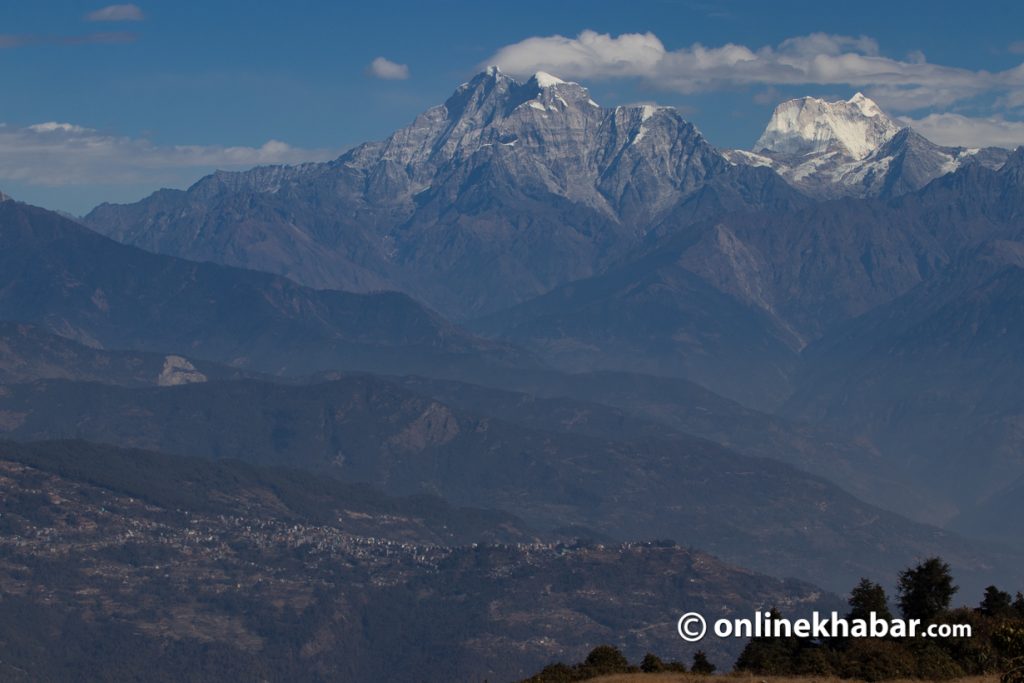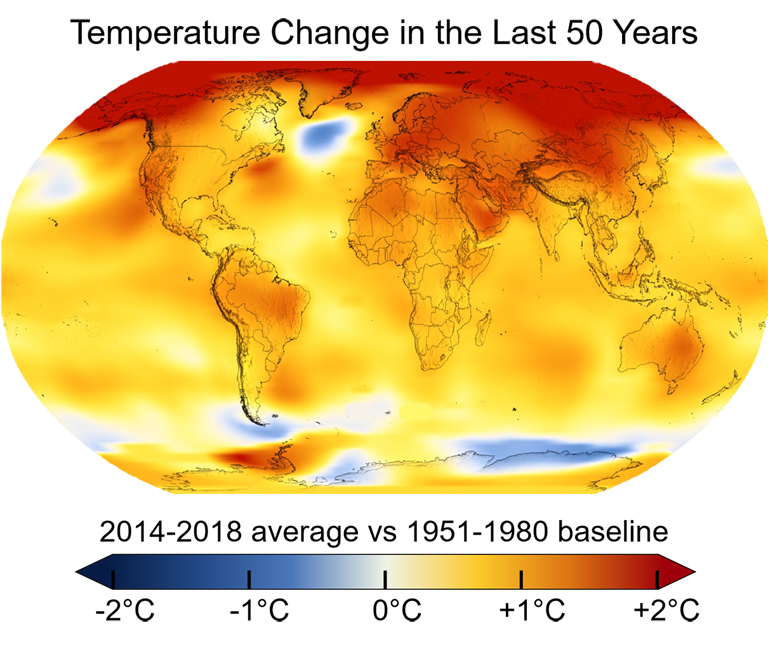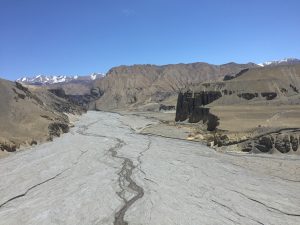
Studies and observation have shown that snow cover in many parts of the world, including the Himalayan region, has been decreasing, particularly in the northern hemisphere. Many reports and pure observation both attest that the mountains in Nepal are now bare and black as opposed to the snow-capped panoramic view that Nepal enjoyed.
But, why? And, what does this mean?
First, here are the major causes.
1. No winter rainfall

Perhaps the most obvious reason for the lack of sufficient snow in the mountains in Nepal this year is no substantial rainfall this winter.
The winter has been dry in Nepal this year. Not just in the peak of the winter, but the country also lacked rainfall in the pre-winter season, further exasperating the situation.
On average, between December to February, the country receives about 60 mm of precipitation, which will be significantly low this year.
2. Climate change

A climate modelling project conducted by the International Centre for Integrated Mountain Development (ICIMOD) has simulated the future climate of the Hindu Kush Himalayan region, which includes Nepal. According to data, the average snow cover in the northern hemisphere has decreased by about 1.5 per cent per decade since the 1970s. Climate change is one of the main factors driving this trend.
As per ICIMOD studies, the average retreat rate of glaciers in Nepal, Bhutan, India and Pakistan is about 0.3 to 1 metre per year. The mountains in Nepal are said to be losing their glaciers at the fastest rate due to rising temperatures.
3. Temperature

Temperature is a major factor in snow accumulation. In Nepal, the temperature generally drops as the elevation increases, so the higher peaks are more likely to be snow-capped.
However, rising temperatures are causing more snowfall to fall as rain, rather than as snow. This can cause a decrease in snow cover in the mountains in Nepal, even if overall precipitation remains the same. In addition, warmer temperatures can also cause snow to melt earlier in the year, reducing the overall amount of snow on the ground that remains.
It is important to note that snowfall patterns can vary significantly from year to year and region to region with some regions experiencing more snowfall than others. The rate of decrease may or may not also be the same throughout the region.
It is possible that heavy snowfalls could temporarily bring snow back to the mountains in Nepal that have been losing their snow cover due to climate change. However, it is important to note that the long-term trend of warming temperatures and decreasing snowfall is likely to continue, which means that even heavy snowfalls will possibly fail to reverse this trend.
Now, the consequences…
1. Economy

The mountains in Nepal are key to its economy as they garner up to 16.52 per cent of tourists for adventure including trekking and mountaineering as per the 2019 report. But, if the snow-capped mountains in Nepal lose their beauty, the numbers are likely to drop significantly affecting the tourist flow and national economy.
2. Water use

The cascading effects of mountains in Nepal losing their snow cover can be seen in the foothills. Snow acts as a natural reservoir, so without enough snow, there will be less water for irrigation, drinking, and hydroelectricity generation.
Snow melting is a crucial source of water, so without enough snow, there may not be enough water to meet the needs of local communities. For hydroelectricity too, which accounts for around 80 per cent of Nepal’s total electricity generation capacity, rapid snow melting can lead to flooding and landslides, which can damage hydroelectric infrastructure. After that point, the lack of snow will lead to reduced water flow and a decrease in hydroelectricity generation.
2. Impact on land
Naturally, the mountains in Nepal losing snow will lead to changes in vegetation patterns and endangers plants and animals. This can affect the growth and survival of certain plants. If the snow melts too quickly in the mountains in Nepal, the soil may not be able to absorb all the water, leading to waterlogged conditions that can harm plants. On the other hand, if the snow melts too slowly, the soil may not receive enough moisture, leading to dry conditions that can also harm plants.

And without snow in the mountains in Nepal, there may be an increased risk of flash floods and landslides. Snow acts as a barrier, slowing down the movement of water and helping to prevent erosion. Without enough snow, water may move more quickly, leading to more severe floods and landslides. This can cause damage to infrastructure and homes, and put lives at risk.
Another impact of snow melting on the ground is the thawing of permafrost. This can lead to the destabilisation of the ground and can cause buildings, roads, and other structures to sink or shift.
3. Temperature rise

On a global scale, the lack of snow in mountains will further aggravate the rise in temperature. Snow reflects sunlight back into space and helps to keep the temperature cool, known as the albedo effect. The mountains in Nepal have been a key in this phenomenon. So, when there is less snow, the ground absorbs more heat, which can lead to a rise in temperature creating a cycle of temperature rise and snow melting.
This can lead to changes in the diversity and distribution of plant species in Nepal, impacting the local ecosystem, including wildlife, pollinators, and soil microorganisms.
In order to slow down or reverse the trend in the mountains in Nepal, it is important to address the underlying causes of climate change, such as reducing greenhouse gas emissions and implementing sustainable development practices.
























